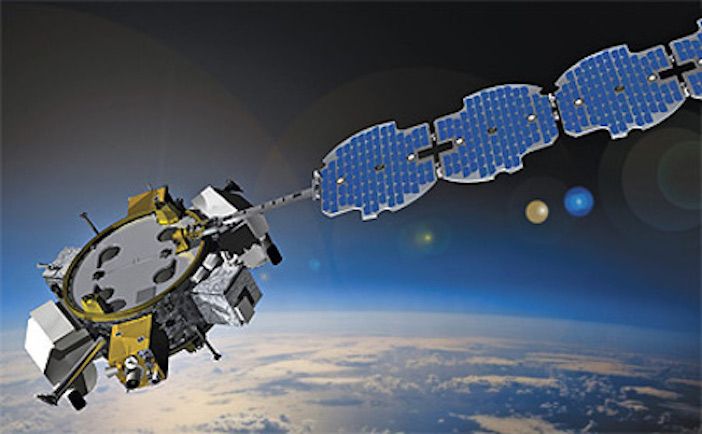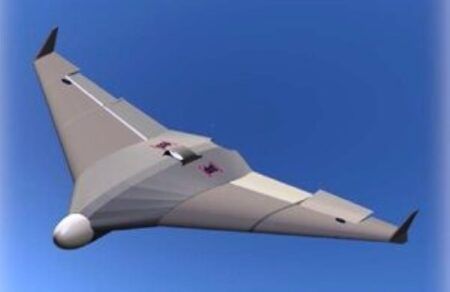The EAGLE experimental spacecraft (Image: Orbital ATK)
The US Air Force Research Laboratory’s experimental EAGLE spacecraft has been launched on an Atlas V rocket from Cape Canaveral, Florida.
The Air Force Research Laboratory’s (AFRL) Evolved Expendable Launch Vehicle (EELV) Secondary Payload Adapter (ESPA) Augmented Geosynchronous Laboratory Experiment satellite, or EAGLE for short, is a maneuverable space vehicle that can accommodate six deployable spacecraft while in orbit. The EAGLE was built by AFRL engineers from a design developed by US aerospace and defense firm Orbital ATK.
EAGLE’s design is a modification of a ring structure frequently used to connect small satellites to their launchers and includes solar panels, computers, instrumentation and thrusters.
An Air Force C-17 unloads a Mycroft Spacecraft Shipping Container at Titusville, Florida, in February 2018. (Image: AFRL Space Vehicles Directorate)
The EAGLE demonstrator, which launched aboard spacecraft launch AFSPC-11 on April 14, will stay in orbit for a year to demonstrate the design’s viability and cost-effectiveness for future spacecraft missions. It will “transition technology and knowledge of future space capabilities in support of Air Force Space Command’s Space Warfighting Construct” said the AFRL.
Major General William T Cooley, Air Force Research Laboratory commander, said, “The space domain is crucial today and will only increase in value in the future.
“If the US Air Force is to embrace space superiority then improving our ability to protect and defend vital space interests is of paramount importance.”
EAGLE is hosting experiments that are designed to detect, identify and attribute threatening behavior as well as enhance Space Situational Awareness (SSA).
Among the experiments being hosted on EAGLE is AFRL’s Mycroft SSA experiment, which will separate and fly-away from EAGLE and be used for training “space professionals”, according to the AFRL.
Another experiment is investigating hypertemporal imaging, a technique that blends images taken of different spots on the Earth in different spectral wavelengths at regular intervals.
Glen Chadbourn, Charlie Briggs and Greg Ellison (left to right) prepare to fuel the EAGLE spacecraft (Image: AFRL Space Vehicles Directorate)
The EAGLE program is led by the AFRL Space Vehicles Directorate, which is located at Kirtland Air Force Base, New Mexico, in partnership with the Air Force Space and Missile Systems Center at Los Angeles AFB, California.
As well as Orbital ATK of Dulles, Virginia, other firms involved in the program include ATA-Aerospace of Albuquerque, New Mexico; and Moog-Broadreach Engineering of Tempe, Arizona.
April 17, 2018





